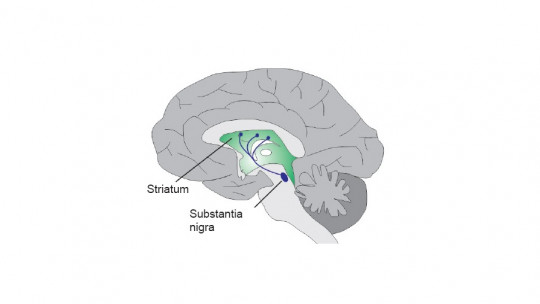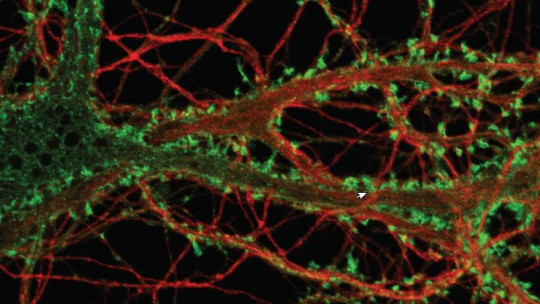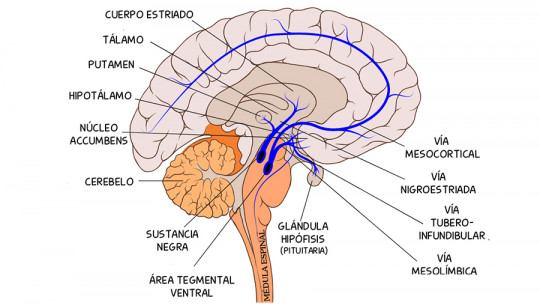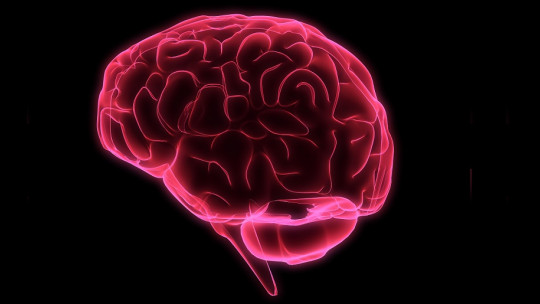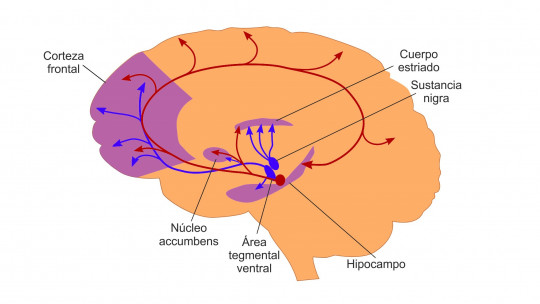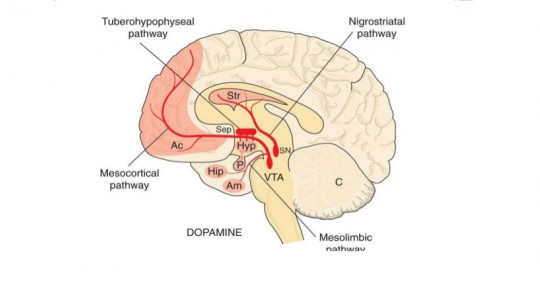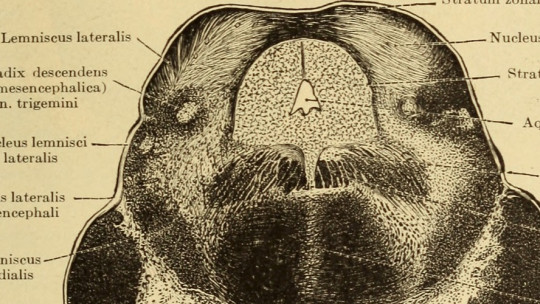Dopamine is one of the main neurotransmitters in the brain, known above all for its involvement in processes related to pleasure and reward systems. However, its role in motor control is fundamental, using the different dopaminergic pathways to travel through the brain.
One of these neural networks is the nigrostriatal pathway Throughout this article we will talk about what structures it is made up of, as well as its role in brain functioning and the clinical implications that its deterioration entails.
What is the nigrostriatal pathway?
The nigrostriatal pathway is one of the four pathways that make up the dopaminergic system. Together with the mesolimbic pathway, the mesocortical pathway and the tuberoinfundibular pathway, it is responsible for transporting dopamine from one place to another in the brain.
To be more exact, the nigrostriatal pathway is one whose bundles project from the substantia nigra to the striatum, specifically to the caudate nucleus and the putamen. This pathway has a fundamental role in motor control the stimulation of intentional movement being its main function.
Lesions or alterations typical of disorders such as Parkinson’s disease or chorea affect the nigrostriatal pathway, generating numerous symptoms. Likewise, dopamine D2 antagonists can induce extrapyramidal symptoms associated with pseudoparkinsonism.
Related structures
As mentioned above, the nigrostriatal pathway runs through the brain from the substantia nigra to the caudate nucleus and putamen, located in the striatum.
1. Substantia nigra
The substantia nigra corresponds to a brain area located in the midbrain, which stores dopamine-producing neurons. It is called substantia nigra because its tone is darker than the rest of the areas that surround it. because its neuromelanin levels are the highest in the area
The main function of the substantia nigra is related to eye movements, motor control, reward seeking, learning and addiction. However, most of them are also mediated by the striatum.
When this structure begins to disintegrate or begins a degeneration process, conditions such as Parkinson’s disease appear which entails numerous motor and cognitive disorders.
2. Striatum
Also called the striatum, the striatum makes up the subcortical part of the telencephalon. This structure is distinguished by being essential when transmitting information to the basal ganglia.
The set of structures that make up the striatum are the caudate nucleus, putamen and nucleus accumbens However, in this article only the former will be described as they are an essential part of the functioning of the nigrostriatal pathway.
3. Caudate nucleus
The structures known as the caudate nuclei are located approximately in the center of the brain, very close to the thalamus We speak of nuclei in plural because there are two different nuclei inside each of the hemispheres of the brain.
Traditionally, the basal ganglia have been associated with the control of higher-order motor skills. Within these functions, the caudate nucleus participates in the domain of voluntary control, as well as in learning and memory processes.
4. Putamen
The putamen is a system also located in the central area of the brain, which plays an essential role in the control of movements, specifically in the control and direction of fine voluntary movements.
Furthermore, the correct functioning of the putamen exerts an important influence on operant conditioning and recent studies label it as the origin of feelings of love and hate.
Role in brain functioning
As we have seen, the nigrostriatal pathway, and those structures that make it up, are responsible for govern and promote the control of voluntary movements
In general, movement control is the result of the successful combination of sensory information and motor information coordinated by the central nervous system (CNS).
Within this motor control we find voluntary movements, involuntary movements and reflexes. However, in this case it is the voluntary movements that are controlled by the nigrostriatal pathway.
Voluntary movements are carried out with the intention of achieving an objective, that is, they are purposeful. Besides, most of these movements can be learned and improved through practice
Clinical implications and associated disorders
By now knowing the structures related to the mesocortical pathway and the functions it performs, it will be much easier for us to understand what effects or consequences the decrease in activity in these neural networks entails.
This decrease in activity level can occur either due to the administration of dopaminergic D2 antagonist medications or due to progressive degeneration of the pathway, which gives rise to diseases such as choreas or Parkinson’s disease.
D2 antagonists
D2 antagonists are commonly used in the treatment of gastric problems such as nausea, vomiting or gastrointestinal problems. However, its action as a dopamine antagonist can cause unwanted extrapyramidal effects such as dystonia or pseudoparkinsonian-type movements.
Koreas
Choreas are a group of neurological conditions that are distinguished by causing people to experience a series of strange involuntary movements in their feet and hands. These impulses are caused by a series of intermittent and uneven muscle contractions that is, they do not present a repetitive or rhythmic pattern, but rather they seem to be transmitted from one muscle or another.
Within this group is the well-known Huntington’s Chorea, benign familial chorea or familial inverted choreoathetosis.
Parkinson’s disease
Parkinson’s disease is a motor disorder that occurs relatively frequently in people over 60 years of age. The origin of this disease is found in a decrease in the production of dopamine, especially in the nigrostriatal pathway, which is no longer sufficient to supply the demands of the brain.
It is a disease that develops progressively, first affecting one side of the body and then acting on the other. The main symptoms of this disease are:

